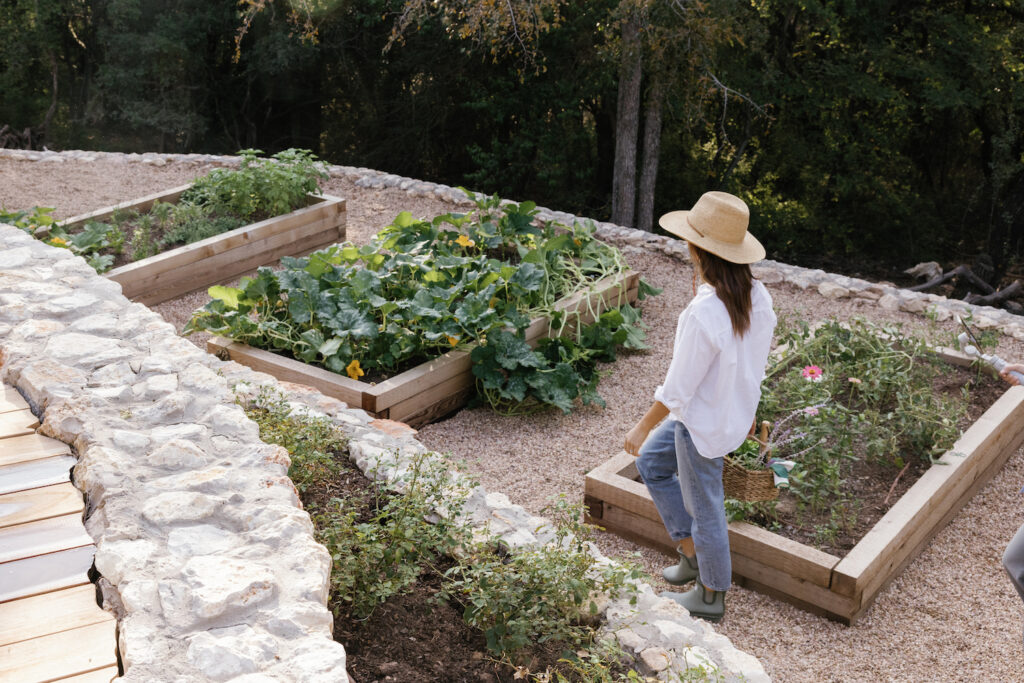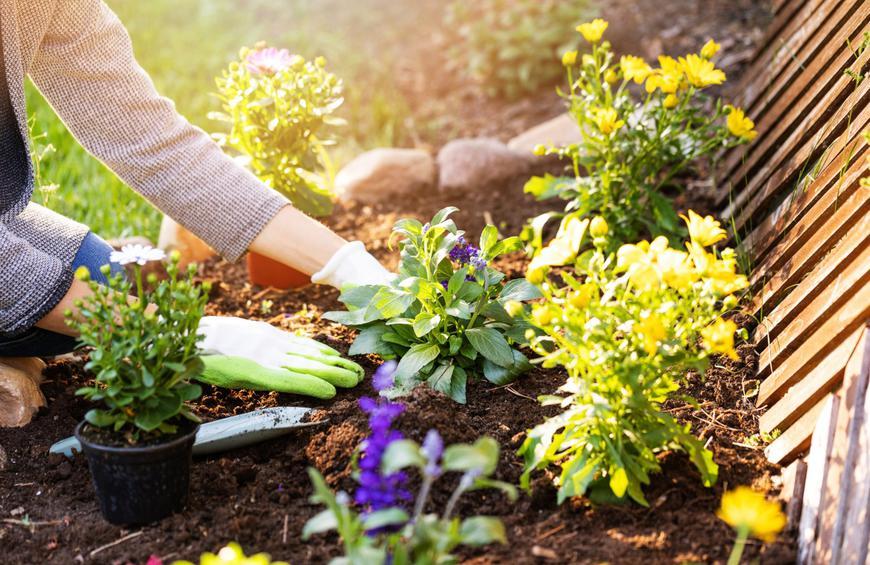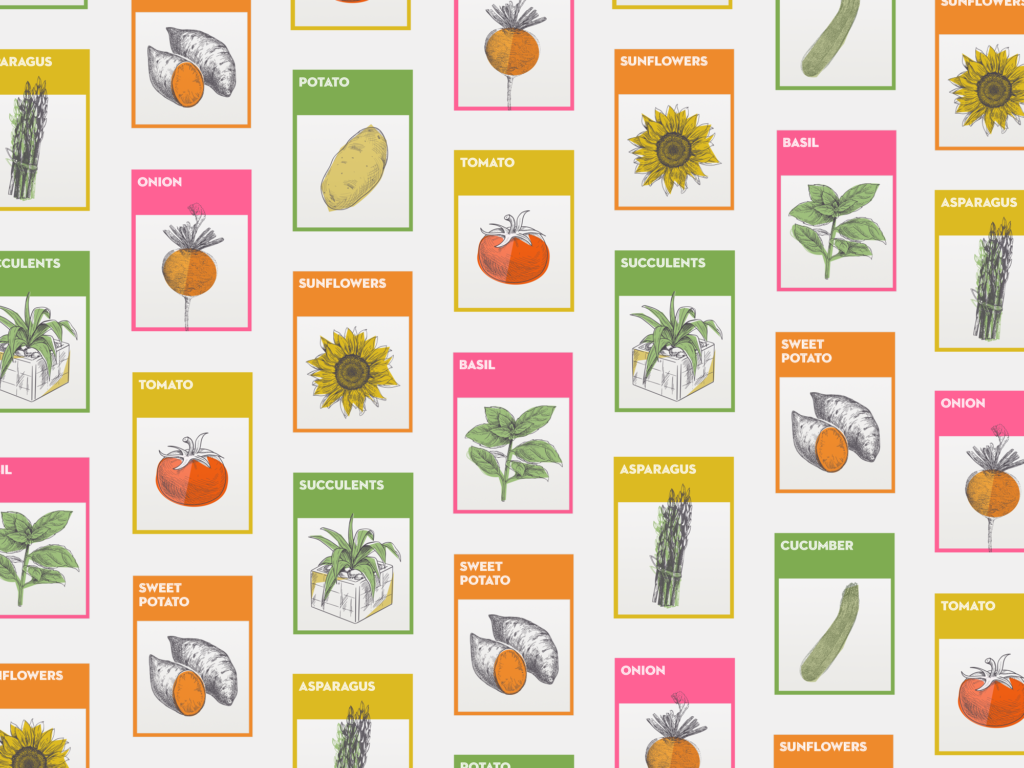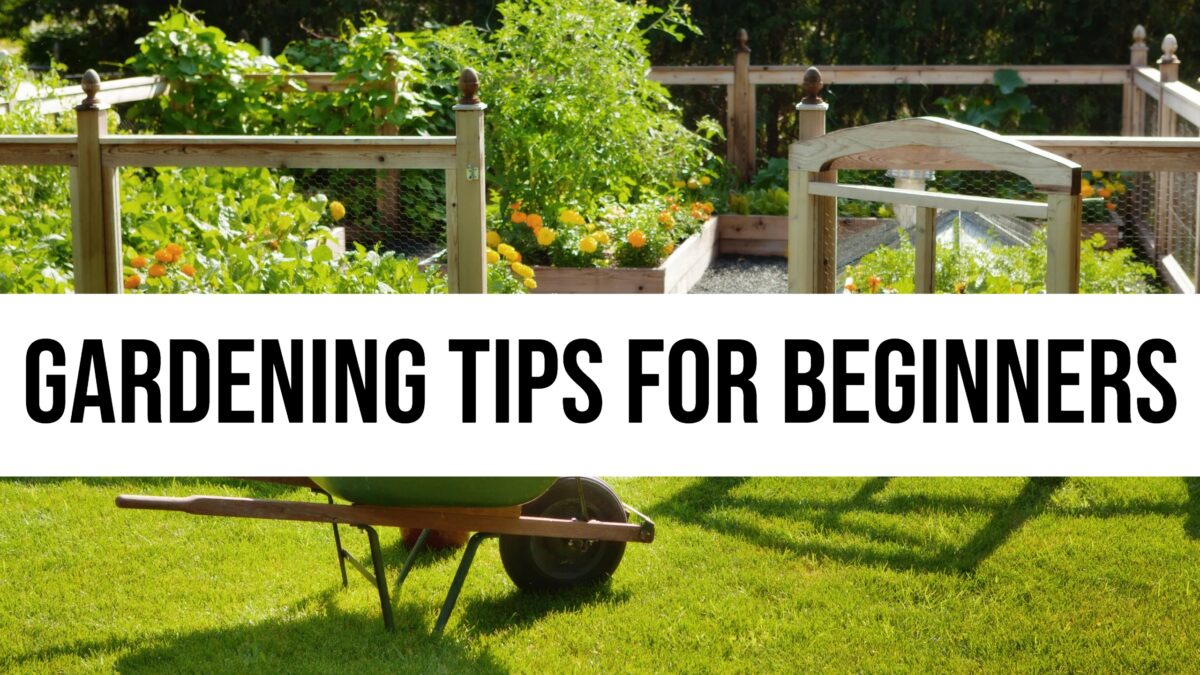Embarking on a journey into the world of gardening can be both exciting and rewarding for beginners. Whether you have a green thumb or are just starting to explore the joys of cultivating your own garden, it’s essential to equip yourself with some fundamental gardening tips to set you on the path to success.
In this guide, we’ll delve into various gardening tips for beginners, providing practical advice to help beginners create a thriving and enjoyable garden space.
Here are some of the best gardening tips for beginners:
Choosing the Right Location for Your Garden
Embarking on a gardening journey begins with a crucial decision: selecting the right location for your garden. It is one of the most essential gardening tips for beginners. The success of your plants hinges on the environmental conditions they are exposed to.
The most fundamental factor to consider when choosing a location is sunlight. Plants, by nature, are dependent on sunlight for photosynthesis – the process through which they convert light into energy.
As a general rule, most plants thrive when exposed to 6-8 hours of sunlight each day. Therefore, it’s imperative to scout your outdoor space for an area that receives an adequate amount of sunlight.
Moreover, different plants have varying sunlight requirements. Some, like sun-loving vegetables, demand direct sunlight, while others, such as certain herbs, tolerate partial shade. Understanding the specific needs of the plants you intend to grow is crucial in choosing an appropriate location.
In addition to sunlight, the soil quality and drainage of the chosen spot play pivotal roles. Well-draining soil is essential to prevent waterlogged roots, which can lead to root rot and adversely affect plant health. Take note of any low-lying areas prone to water accumulation and avoid them, as excessive moisture can compromise the well-being of your plants.
Consider the microclimate of your chosen location as well. Factors such as wind exposure and temperature fluctuations can influence plant growth. If your garden is in an area prone to strong winds, consider installing windbreaks to protect delicate plants. Understanding and working with the existing microclimate will contribute to the overall resilience of your garden.
In essence, choosing the right location involves a thoughtful analysis of sunlight exposure, soil quality, drainage, and microclimate considerations. A well-chosen spot sets the stage for healthy plant development and a bountiful harvest.
Starting with Easy-to-Grow Plants
As a novice gardener, the excitement of nurturing your own green haven can be enhanced by starting with plants that are known for their resilience and simplicity. Opting for easy-to-grow plants provides a gentle introduction to the world of gardening, fostering confidence and enthusiasm.
Herbs like basil, mint, and parsley are excellent choices as one of the most-needed gardening tips for beginners. Not only do they add flavor to your culinary endeavors, but they are also forgiving and adaptable. Herbs generally require minimal care, making them an ideal starting point for those new to gardening.
Vegetables such as tomatoes and lettuce are other staples in the realm of easy-to-grow plants. These vegetables are known for their hardiness and relatively undemanding cultivation requirements. Witnessing the growth and development of these plants can be particularly rewarding for beginners, providing a tangible sense of accomplishment.
Starting with easy-to-grow plants allows novice gardeners to become familiar with basic gardening practices such as watering, pruning, and fertilizing without being overwhelmed. It’s an opportunity to hone your skills and gain confidence before experimenting with more complex or finicky plant varieties.
Moreover, easy-to-grow plants are often more resilient to beginner mistakes. They can tolerate minor lapses in care and recover more easily from stress, providing a forgiving environment for learning. As you gain experience and become more comfortable with the basics, you can gradually expand your repertoire to include a wider variety of plants.
In essence, starting with easy-to-grow plants sets the stage for a positive and rewarding gardening experience. It allows beginners to develop their skills and confidence, paving the way for a more diverse and ambitious garden in the future.
Understanding Your Soil
Soil, often overlooked but critically important, is the literal and figurative foundation of a successful garden. Understanding your soil, one of the gardening tips for beginners – its composition, pH level, and drainage characteristics – is key to creating an environment where plants can thrive.
The first step in understanding your soil is performing a soil test. This test provides valuable insights into the pH level and nutrient content of your soil. Most plants have specific pH preferences, so knowing your soil’s pH allows you to choose plants that are well-suited to your garden’s conditions.
Amending your soil with organic matter is a crucial step in enhancing its structure and fertility. Compost, a rich and natural source of nutrients, improves soil texture and encourages beneficial microbial activity. Incorporating compost into your soil contributes to its overall health and vitality.
Well-draining soil is essential for preventing waterlogged roots, a common issue that can lead to various problems such as root rot. To improve drainage, add organic matter and consider raised beds in areas where drainage is a challenge. Conversely, in regions with fast-draining soils, incorporating organic matter helps retain moisture.
Understanding your soil also involves being mindful of its composition. Sandy soils drain quickly but may require more frequent watering, while clay soils retain water but may become compacted. Loamy soils, a balanced combination of sand, silt, and clay, are generally ideal for gardening due to their optimal drainage and nutrient-retaining properties.
Watering Techniques
Watering, one of the most important and often neglected gardening tips for beginners, is a fundamental aspect of gardening that directly impacts the health and vitality of your plants. As a beginner, mastering proper watering techniques is crucial for fostering optimal growth and preventing common issues like overwatering or underwatering.
Understanding when and how to water your garden involves a delicate balance. The general rule of thumb is to water when the top inch of soil feels dry to the touch.
This ensures that plants receive adequate moisture without promoting waterlogged conditions. However, the specific water needs of your plants may vary, so it’s essential to familiarize yourself with the requirements of each species in your garden.
The timing of watering is equally important. Watering in the early morning or late afternoon is ideal, as this allows plants to absorb moisture more effectively.
Watering during these times minimizes evaporation, ensuring that the soil retains the necessary moisture for the plants. Avoid watering during the hottest part of the day, as the water may evaporate too quickly, and the plant leaves may suffer from water droplets acting as magnifying glasses.
Deep watering is a practice that encourages the development of a robust root system. Rather than frequent shallow watering, which can lead to surface root growth and vulnerability to drought, aim for less frequent but deeper watering sessions. This promotes the growth of deep, resilient roots that can withstand dry periods.
Investing in a good watering can or hose with a gentle spray attachment is beneficial for delivering water directly to the base of the plants. This minimizes water wastage and reduces the risk of soil-borne diseases by avoiding water contact with the leaves.
In essence, mastering watering techniques involves a nuanced understanding of your plant’s specific needs, coupled with a commitment to consistency. By providing your garden with the right amount of water at the right times, you set the stage for healthy, thriving plants.

Mulching
Mulching, one of the essential gardening tips for beginners, is a simple yet highly effective technique that offers a multitude of benefits to your garden. Think of mulch as nature’s blanket – it regulates soil temperature, retains moisture, suppresses weeds, and contributes to overall soil health. As a beginner gardener, understanding the significance of mulching can elevate your gardening experience.
One of the primary benefits of mulch is moisture retention. By creating a protective layer over the soil, mulch helps slow down evaporation, ensuring that the soil retains moisture for a more extended period. This is particularly beneficial during hot and dry spells when water conservation becomes crucial for plant survival.
Mulching also plays a vital role in regulating soil temperature. It acts as an insulator, keeping the soil cooler in hot weather and warmer in colder temperatures. This temperature stability is beneficial for the roots of plants, as extreme temperature fluctuations can stress and damage them.
Weed suppression is another key advantage of mulching. By forming a barrier that impedes weed growth, mulch reduces competition for water and nutrients. This, in turn, allows your plants to flourish without having to compete with invasive weeds for essential resources.
When applying mulch, be mindful of its thickness. A layer of 2-4 inches is generally sufficient to provide the desired benefits. Ensure that the mulch is not piled against the stems of plants, as this can create a haven for pests and diseases.
Choosing the right type of mulch for your garden is essential. Organic mulches, such as straw, bark, or compost, break down over time, enriching the soil with valuable nutrients. Inorganic mulches, like gravel or plastic, offer long-lasting weed control but do not contribute to soil fertility.
In summary, mulching is a valuable ally in your gardening endeavors. Its multifaceted benefits contribute to a healthier, more resilient garden, making it a practice worth incorporating into your gardening routine.
Pruning and Deadheading
Pruning and deadheading are essential practices for maintaining the shape, health, and vitality of your garden. As a beginner gardener, understanding the art of selective pruning and removing spent flowers (deadheading) can elevate your gardening experience and contribute to the overall well-being of your plants.
Pruning involves the targeted removal of specific branches or stems to shape a plant, control its size, or promote healthy growth. It’s a methodical process that requires careful consideration of the plant’s natural form and growth habits. Regular pruning can prevent overcrowding, improve air circulation, and stimulate the development of new shoots.
Deadheading, on the other hand, involves the removal of spent or faded flowers. This practice serves multiple purposes, the primary one being to encourage continuous blooming.
By preventing the plant from putting energy into seed production, deadheading redirects its resources toward producing more flowers. This not only extends the flowering period but also enhances the overall aesthetic appeal of your garden.
Pruning and deadheading are particularly important for perennial plants and flowering shrubs. As these plants mature, their natural growth patterns may lead to dense foliage or uneven flowering. Pruning allows you to shape them into a more desirable form and promote a balanced distribution of flowers.
When engaging in pruning and deadheading, it’s essential to use clean and sharp tools to minimize stress on the plants. Make cuts just above a node or bud to encourage new growth in the desired direction. Additionally, be attentive to the specific requirements of each plant, as overzealous pruning can potentially harm certain species.
Fertilizing
Gardening tips for beginners include fertilizing. It is a key aspect of successful gardening, providing essential nutrients that support the health and vitality of your plants. As a beginner, understanding the basics of fertilizing is crucial for creating an environment where your garden can flourish.
Fertilizers are formulated to supplement the soil with the nutrients that plants need for optimal growth. The three primary nutrients – nitrogen, phosphorus, and potassium – play different roles in plant development. Nitrogen promotes lush foliage, phosphorus supports root and flower development, and potassium enhances overall plant health and disease resistance.
When considering fertilizing, it’s essential to choose the right type of fertilizer for your plants. All-purpose fertilizers are well-suited for most garden plants, providing a balanced mix of nutrients. Organic fertilizers, derived from natural sources like compost or manure, offer a sustainable and environmentally friendly option.

Understanding the recommended application rates and frequency of fertilization is crucial. Over-fertilizing can harm plants, causing burns to the roots and disrupting the delicate balance of nutrients in the soil. Conversely, under-fertilizing may lead to nutrient deficiencies and stunted growth.
Be sure to follow the instructions on the fertilizer packaging or seek advice from gardening experts to determine the appropriate feeding schedule for your specific plants.
Fertilizing is not a one-size-fits-all practice, as different plants have varying nutrient requirements. Pay attention to the specific needs of each plant in your garden and adjust your fertilizing regimen accordingly.
For example, flowering plants may benefit from a fertilizer higher in phosphorus to promote abundant blooms, while leafy greens may require a nitrogen-rich option for robust foliage.
In summary, fertilizing is a vital component of successful gardening that requires a thoughtful and informed approach. By providing your plants with the nutrients they need in the right amounts and at the right times, you contribute to a garden that is not only visually appealing but also robust in its overall health.
Pest Control
One of the challenges every gardener faces is dealing with pests that can potentially harm or destroy plants. Pest control is a crucial aspect of gardening, and as a beginner, understanding how to manage common garden pests is essential for maintaining a healthy and thriving garden.
The first step in pest control is identification. Regularly inspect your plants for signs of insect damage, unusual spots, or wilting. Common garden pests include aphids, caterpillars, and spider mites. Identifying pests early allows for timely intervention, preventing the escalation of pest-related issues.
One effective approach to pest control is introducing natural predators. Beneficial insects like ladybugs, lacewings, and predatory beetles can help keep pest populations in check.
Creating a garden environment that attracts these allies, such as planting nectar-rich flowers or providing shelter, contributes to a more balanced ecosystem.
For those instances where pest populations become more challenging to manage, organic pest control methods offer effective alternatives to chemical pesticides.
Neem oil, insecticidal soap, and diatomaceous earth are examples of natural solutions that can target specific pests without harming beneficial insects or causing long-term damage to the environment.
Cultural practices, such as crop rotation and companion planting, also play a role in pest management. Crop rotation disrupts the life cycles of soil-borne pests, while companion planting involves strategically placing plants that repel or attract specific insects. These methods contribute to a more resilient and pest-resistant garden.
As a beginner, it’s crucial to strike a balance between addressing pest issues and preserving the overall health of your garden ecosystem. Avoiding the excessive use of chemical pesticides helps maintain the biodiversity of your garden and prevents unintended harm to beneficial insects.
In conclusion, pest control is a nuanced aspect of gardening that requires a proactive and holistic approach. By incorporating natural predators, employing organic solutions, and implementing cultural practices, you can navigate the challenges posed by garden pests and cultivate a thriving and balanced garden.
Gardening Tools
Equipping yourself with the right gardening tools is a foundational step for every aspiring gardener. The right tools not only make gardening tasks more efficient but also contribute to the overall enjoyment of tending to your green space.
A hand trowel is a versatile and indispensable tool for various gardening tasks. Whether you’re planting seedlings, digging small holes, or weeding, a hand trowel provides precision and control. Look for a trowel with a comfortable grip to minimize hand fatigue during extended use.
Pruners, or hand pruners, are essential for trimming and shaping your plants. They come in various types, including bypass and anvil pruners. Bypass pruners are ideal for precision cutting, while anvil pruners are suitable for cutting thicker branches. Regular pruning helps maintain the shape and health of your plants.
A rake is a versatile tool that serves multiple purposes in the garden. Use it to level soil, gather debris, or spread mulch. A sturdy rake with metal tines is durable and efficient for various tasks throughout the gardening season.
Gloves are a must-have for protecting your hands while gardening. Choose gloves that fit well and provide adequate protection against thorns, sharp objects, and soil. Wearing gloves not only safeguards your hands but also improves your grip and overall comfort during gardening activities.
Consider adding a hoe to your toolkit for effective weeding and soil cultivation. Hoes come in various shapes and sizes, including the traditional flat hoe and the more specialized scuffle hoe. The right hoe can make light work of cultivating the soil and keeping weeds at bay.
A watering can or hose with a gentle spray attachment is essential for delivering water directly to the base of your plants. Proper watering is crucial for plant health, and having the right watering tools ensures that your plants receive water efficiently without causing soil erosion or damage.
Investing in a quality wheelbarrow can make transporting soil, mulch, or other heavy materials much more manageable. Look for a wheelbarrow with sturdy construction and ergonomic handles for easy maneuvering.

Gardening Tips for Beginners – FAQs
How much sunlight do beginner-friendly plants need?
Most beginner-friendly plants, such as herbs like basil and mint, require at least 6-8 hours of sunlight per day. Ensure your chosen gardening spot receives adequate sunlight for optimal plant growth.
What are some easy-to-grow vegetables for beginners?
Beginners can start with vegetables like tomatoes, lettuce, and peppers, which are known for their relatively simple cultivation requirements. These plants offer a satisfying introduction to gardening with tangible results.
How often should I water my garden as a beginner?
Proper watering is crucial for plant health. As a general rule, water when the top inch of soil feels dry. Early morning or late afternoon is the ideal time to water, helping plants absorb moisture efficiently and minimizing the risk of diseases.
What is the best way to improve soil quality for gardening?
To enhance soil quality, perform a soil test to determine its pH and nutrient levels. Amend the soil with organic matter, like compost, to improve structure and fertility. Well-draining soil is vital for preventing waterlogged roots.
How can I control pests in my garden without using harmful chemicals?
Implement natural pest control methods by introducing beneficial insects or using organic pesticides. Regularly inspect your plants for signs of pests and diseases, and address issues promptly to maintain a healthy and thriving garden ecosystem.
Conclusion
Embarking on a gardening journey as a beginner can be a fulfilling and educational experience. By following these gardening tips for beginners, you’ll lay a solid foundation for a successful and enjoyable garden. Remember to be patient, observe your plants, and enjoy the process of nurturing life in your own green haven. Happy gardening!

